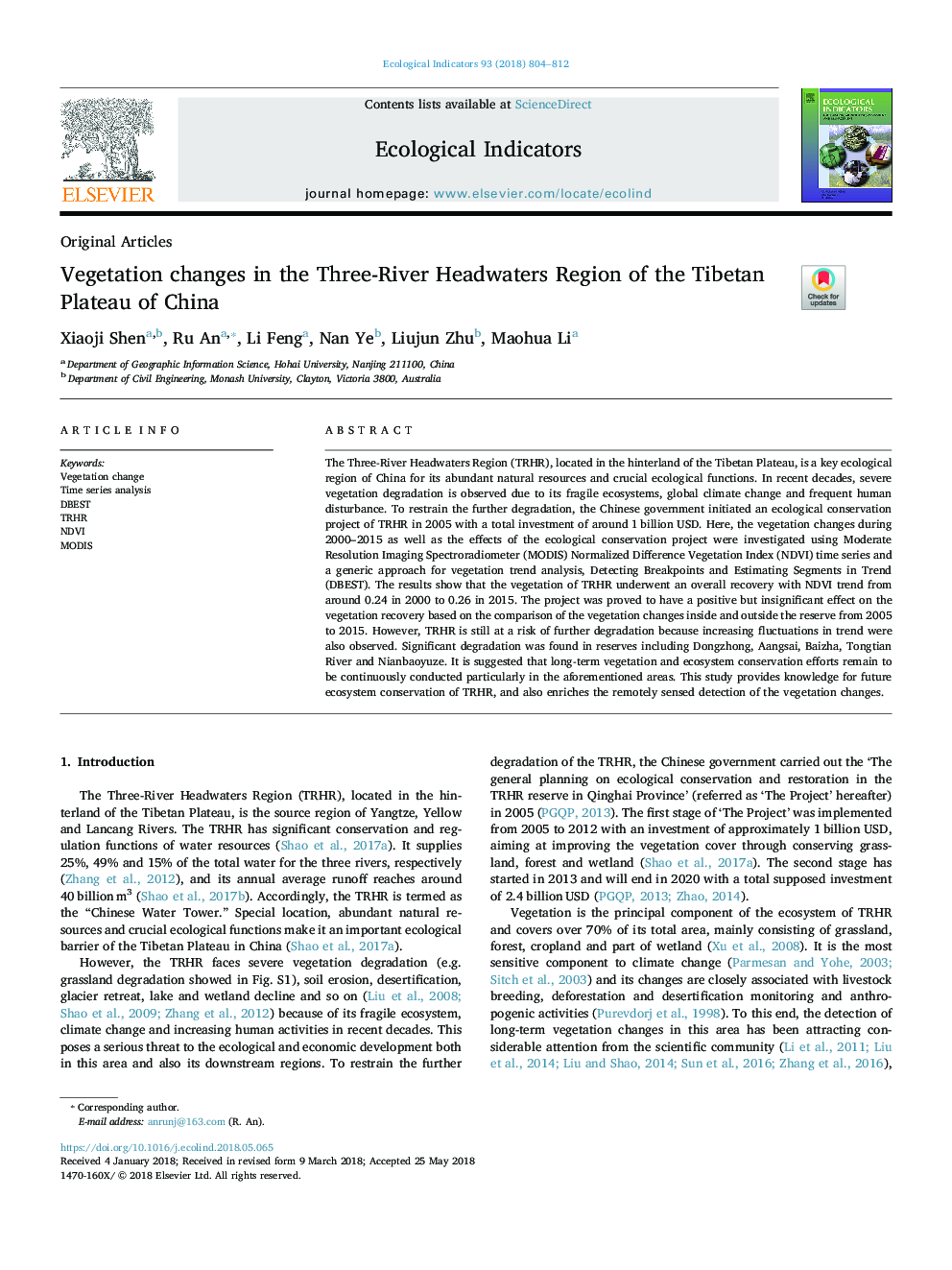| Article ID | Journal | Published Year | Pages | File Type |
|---|---|---|---|---|
| 8845226 | Ecological Indicators | 2018 | 9 Pages |
Abstract
The Three-River Headwaters Region (TRHR), located in the hinterland of the Tibetan Plateau, is a key ecological region of China for its abundant natural resources and crucial ecological functions. In recent decades, severe vegetation degradation is observed due to its fragile ecosystems, global climate change and frequent human disturbance. To restrain the further degradation, the Chinese government initiated an ecological conservation project of TRHR in 2005 with a total investment of around 1â¯billion USD. Here, the vegetation changes during 2000-2015 as well as the effects of the ecological conservation project were investigated using Moderate Resolution Imaging Spectroradiometer (MODIS) Normalized Difference Vegetation Index (NDVI) time series and a generic approach for vegetation trend analysis, Detecting Breakpoints and Estimating Segments in Trend (DBEST). The results show that the vegetation of TRHR underwent an overall recovery with NDVI trend from around 0.24 in 2000 to 0.26 in 2015. The project was proved to have a positive but insignificant effect on the vegetation recovery based on the comparison of the vegetation changes inside and outside the reserve from 2005 to 2015. However, TRHR is still at a risk of further degradation because increasing fluctuations in trend were also observed. Significant degradation was found in reserves including Dongzhong, Aangsai, Baizha, Tongtian River and Nianbaoyuze. It is suggested that long-term vegetation and ecosystem conservation efforts remain to be continuously conducted particularly in the aforementioned areas. This study provides knowledge for future ecosystem conservation of TRHR, and also enriches the remotely sensed detection of the vegetation changes.
Related Topics
Life Sciences
Agricultural and Biological Sciences
Ecology, Evolution, Behavior and Systematics
Authors
Xiaoji Shen, Ru An, Li Feng, Nan Ye, Liujun Zhu, Maohua Li,
